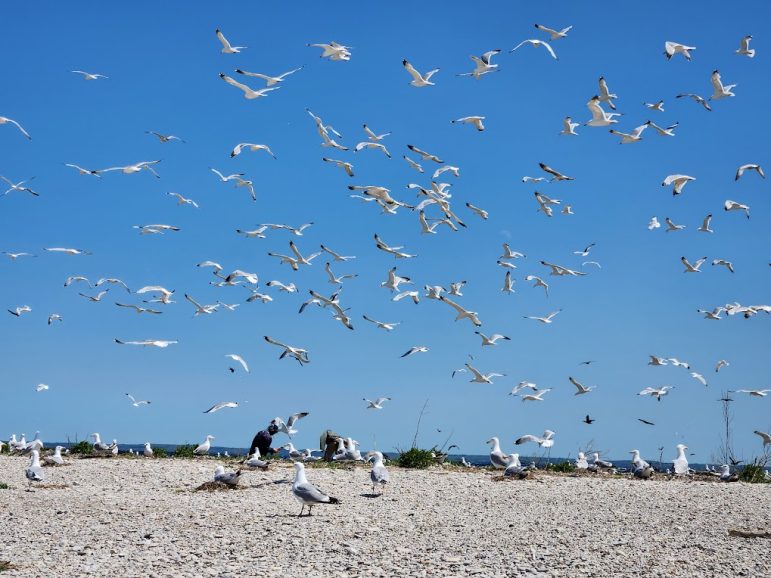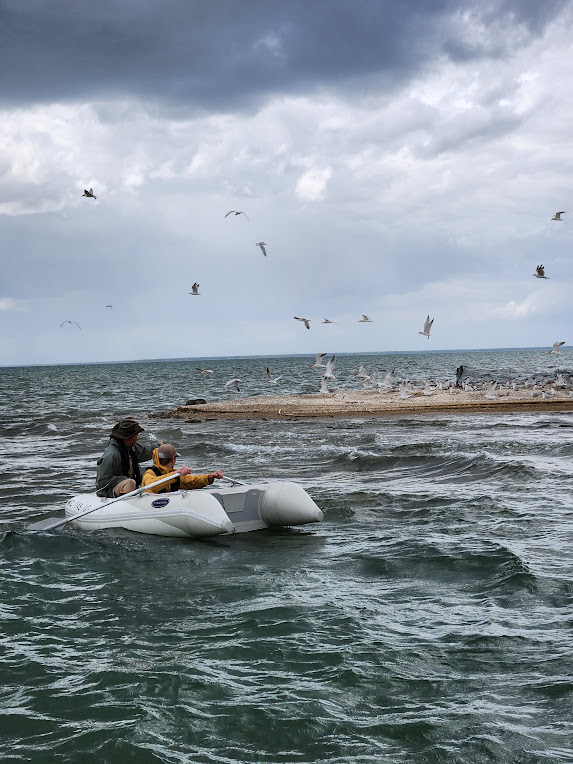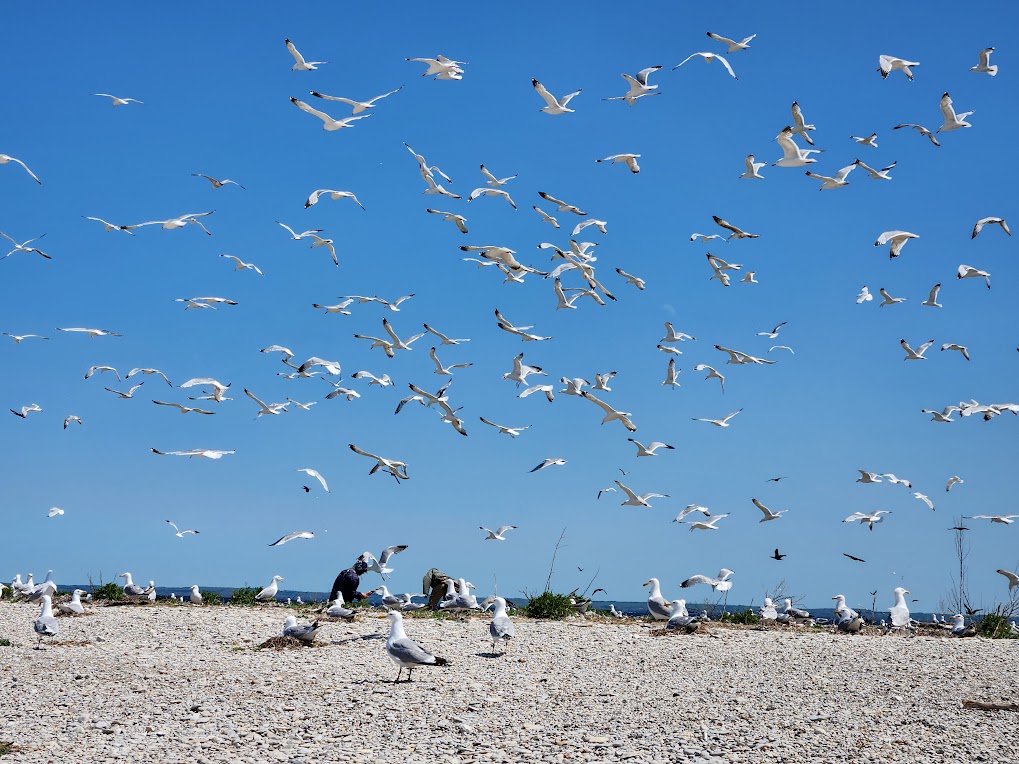
By Joshua Kim
Despite decades-long efforts to clean up toxic hot spots along Michigan’s Great Lakes shores, a recent study shows that the health of water birds in some areas continues to suffer.
Researchers examined ten years of data on fish-eating birds living near Saginaw Bay, the River Raisin, and Grand Traverse Bay. These sites have a history of industrial pollution, including chemicals linked to reproductive problems, deformities, and immune system issues in water birds.
The results showed that infertility and weakened immune systems were more prevalent in water birds at the contaminated sites than in birds in more pristine areas along Lake Superior at the St. Marys River.
The study also found that immune systems and birth defects in herring gulls and Caspian terns at the contaminated sites didn’t improve from 2010 to 2019. In a few cases, health outcomes have grown slightly worse.
Keith Grasman, the study author and a biology professor at Calvin University, said the lack of improvement is especially concerning for Caspian terns. Caspian terns are rare in the Great Lakes and listed as threatened in Michigan.

“When we study and find effects of pollutants on this relatively rare species, it tells us something about the need to clean up pollution to help improve their populations,” Grasman said.
The pollution includes classes of chemicals known as PCBs and PCDDs. Decades of research have linked these chemicals to birth defects and dead embryos in birds. PCBs were used in products including military equipment, electrical transformers and paint. Their production was banned in the U.S. in 1979, but the chemicals persist in the environment without breaking down.
The biological effects continue despite “significant earlier efforts to control sources of PCBs in and along the lower Saginaw River and lower River Raisin,” according to the study, published in the journal Environmental Toxicology and Chemistry.
While the results of the study are disappointing, this kind of monitoring helps focus cleanup resources where they’re needed most, said Kylie McElrath, Michigan conservation manager with the Great Lakes office of the National Audubon Society, a bird and wildlife conservation group.
“Despite the bans on some of these pollutants since the 1970s, there are still these long-lasting impacts on our bird species,” McElrath said. “I think that it’s a good informative study to help better target conservation and remediation efforts.”
Water birds prey on fish and are important to the ecological stability of the Great Lakes ecosystem. They’re also a useful tool for scientists as an indicator of the health of the ecosystem as a whole, McElrath said.
“By monitoring what bird species are present, it can be indicative of what the quality of the wetland is,” she said.
The River Raisin and the Saginaw River and Bay are both listed as “Areas of Concern,” a group of around 40 contaminated sites across the U.S. and Canadian Great Lakes shorelines. While the results show more work is needed at the study sites, more than a dozen other sites have been removed from the list or could be removed soon.
Preserving the Great Lakes and wild birds also requires a focus on prevention, Grasman said. The public can play an important role in this effort by educating the next generation of citizens, he said.
“I think it’s really important for parents to help educate their kids on these kinds of environmental problems,” Grasman said. “Not just on pollution, but other environmental problems in the Great Lakes. They can learn about these issues and then be better citizens as adults.”
